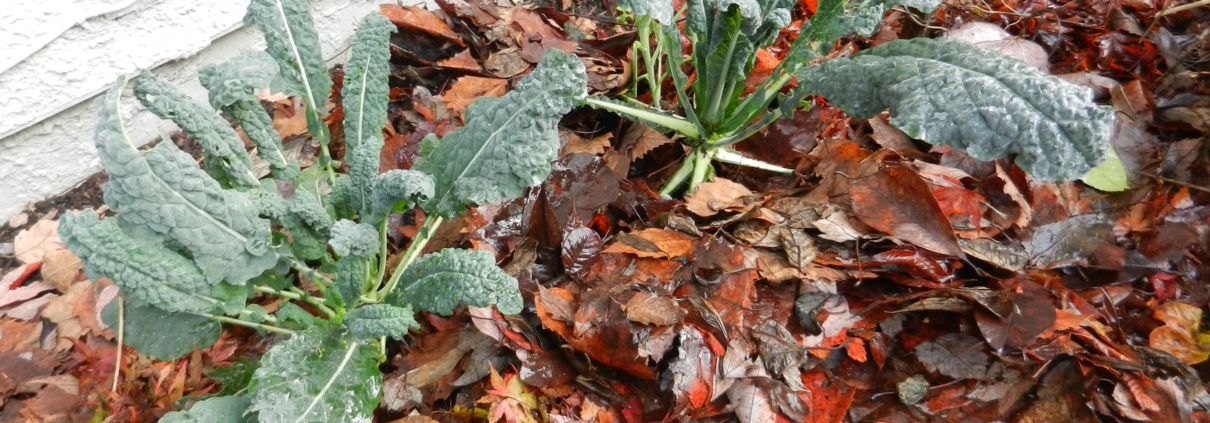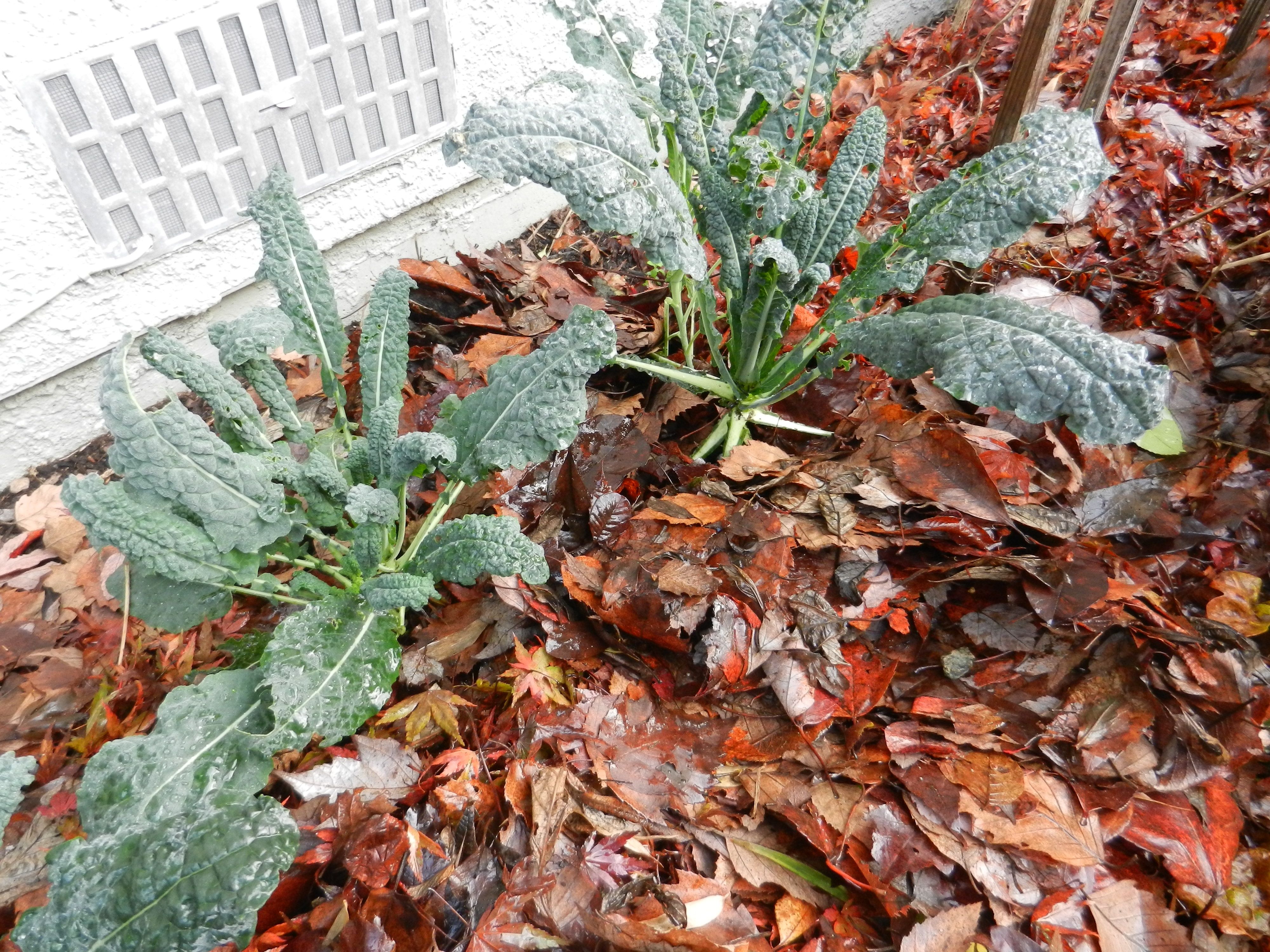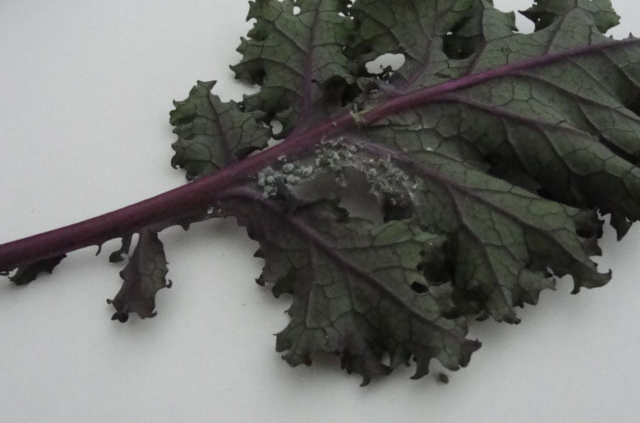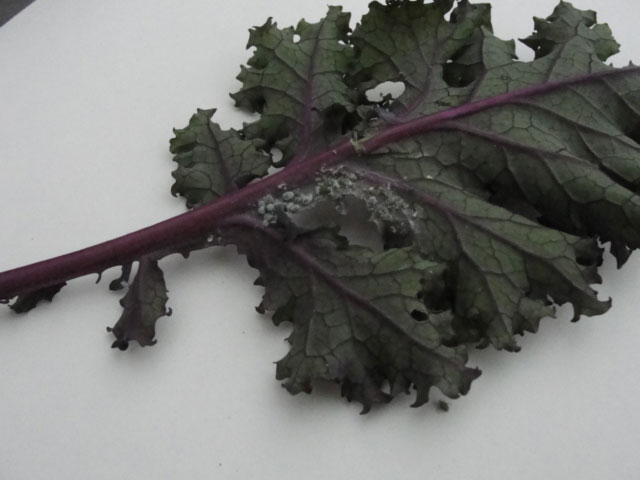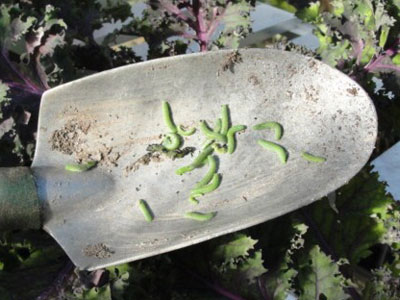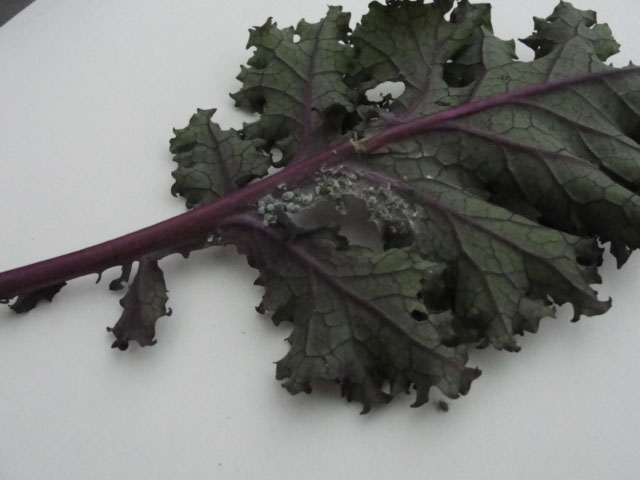Do You Need to Worry about Winter Moth?
By Faye
Winter moth (Operophtera brumata) originated in Europe and came to BC in the 1970s. The larvae, smooth green ‘inchworms’ about ¾” long, hatch in spring and can cause serious damage to emerging leaves if not controlled; after three years of infestation, the tree can become so weakened that dieback and possible mortality can occur.
Their favourite hosts include oak, apple, crabapple, ash, birch, maple, and other broadleaf trees. Damage from the winter moth has been extensive this year, with blueberries and roses also falling prey to their voracious appetites.
The following excerpt from Linda Gilkeson’s website explains the most effective means of control, and the time is right now to get this done.
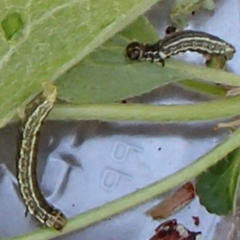 Tree Bands: If winter moth caterpillars ate holes in your tree leaves early last spring (apples and other fruit, oaks, other deciduous trees), then mid-October is good timing to put up sticky tree bands to intercept the females before they lay eggs. The female moths can’t fly so when they emerge from their cocoons at the base of trees they have to walk up the trunk to lay eggs out on the branches. Spread insect glues – ‘Tanglefoot’, ‘Tangletrap’ (‘Tree Guard Tape’ is a ready to use – double-sided sticky tape) available at garden centres on a foot-wide band around tree trunks. The band can be anything that is easy to wrap around the trunk: plastic food wrap, waterproof package tape, or other waterproof material that can be spread with glue. If the tree has deep crevices in the bark, wrap a layer of cotton batting around the tree first, pushing it into the cracks to block moths from crawling under the sticky band. Don’t put the glue directly on bark—it will damage young bark and will also keep on catching insects—mainly beneficial ones–during the growing season (and also kid’s hair, dog’s tails, shirt sleeves, etc.). The moths lay eggs from late October to January so you can remove the tree bands in February.
Tree Bands: If winter moth caterpillars ate holes in your tree leaves early last spring (apples and other fruit, oaks, other deciduous trees), then mid-October is good timing to put up sticky tree bands to intercept the females before they lay eggs. The female moths can’t fly so when they emerge from their cocoons at the base of trees they have to walk up the trunk to lay eggs out on the branches. Spread insect glues – ‘Tanglefoot’, ‘Tangletrap’ (‘Tree Guard Tape’ is a ready to use – double-sided sticky tape) available at garden centres on a foot-wide band around tree trunks. The band can be anything that is easy to wrap around the trunk: plastic food wrap, waterproof package tape, or other waterproof material that can be spread with glue. If the tree has deep crevices in the bark, wrap a layer of cotton batting around the tree first, pushing it into the cracks to block moths from crawling under the sticky band. Don’t put the glue directly on bark—it will damage young bark and will also keep on catching insects—mainly beneficial ones–during the growing season (and also kid’s hair, dog’s tails, shirt sleeves, etc.). The moths lay eggs from late October to January so you can remove the tree bands in February.
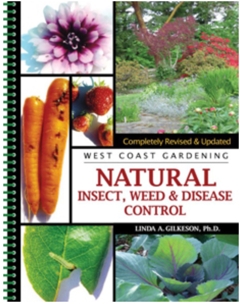 There is a more extensive section on Winter Moth in Linda’s book Natural Insect, Weed and Disease Control. She mentions removing and replacing the bands when they become full of trapped moths, and making sure that each trunk of a multi-trunked tree is banded. On a lighter note, she advises placing the bands high enough to avoid the aforementioned small children’s hair or dogs’ tails!
There is a more extensive section on Winter Moth in Linda’s book Natural Insect, Weed and Disease Control. She mentions removing and replacing the bands when they become full of trapped moths, and making sure that each trunk of a multi-trunked tree is banded. On a lighter note, she advises placing the bands high enough to avoid the aforementioned small children’s hair or dogs’ tails!
Some further options mentioned are:
*** Spray dormant oil between December and February, which smothers the eggs. This must be done before buds begin to swell.
***Spray BTK (Bacillus thuringiensis kurstaki) in the spring, when caterpillars are small and actively feeding, but make sure to get the spray into new buds and rolled leaves.
***More of a prevention than a cure, planting to attract beneficial insects, beetles, ants and birds which will eat the cocoons left on the ground. (planting chart p. 108 in the book)
As always, we thank Linda Gilkeson, PhD entomologist for her help and advice regarding these pesky varmints!
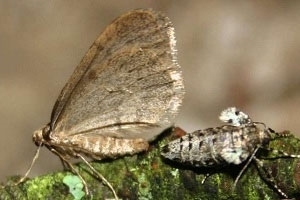
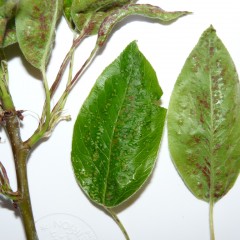
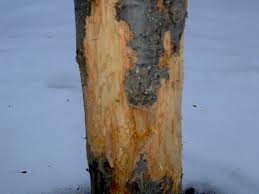
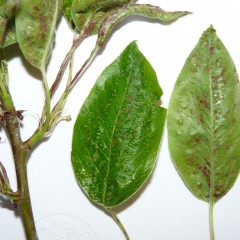
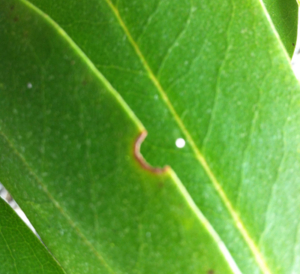
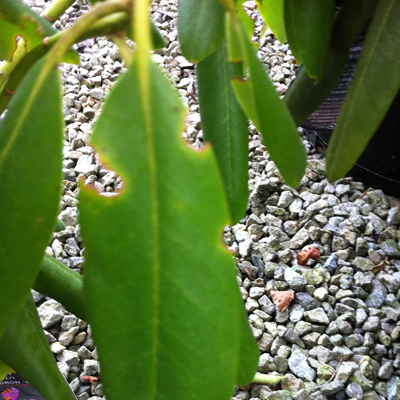 Do you have any leaves that look like the ones in these pictures? This kind of damage is produced by adult root weevils. Root weevil larvae overwinter in the soil and can do serious damage to root systems. Rhodos, Camellias, Laurels, Bergenia, Heuchera, Primula and a host of other plants are all susceptible to weevil damage.
Do you have any leaves that look like the ones in these pictures? This kind of damage is produced by adult root weevils. Root weevil larvae overwinter in the soil and can do serious damage to root systems. Rhodos, Camellias, Laurels, Bergenia, Heuchera, Primula and a host of other plants are all susceptible to weevil damage.